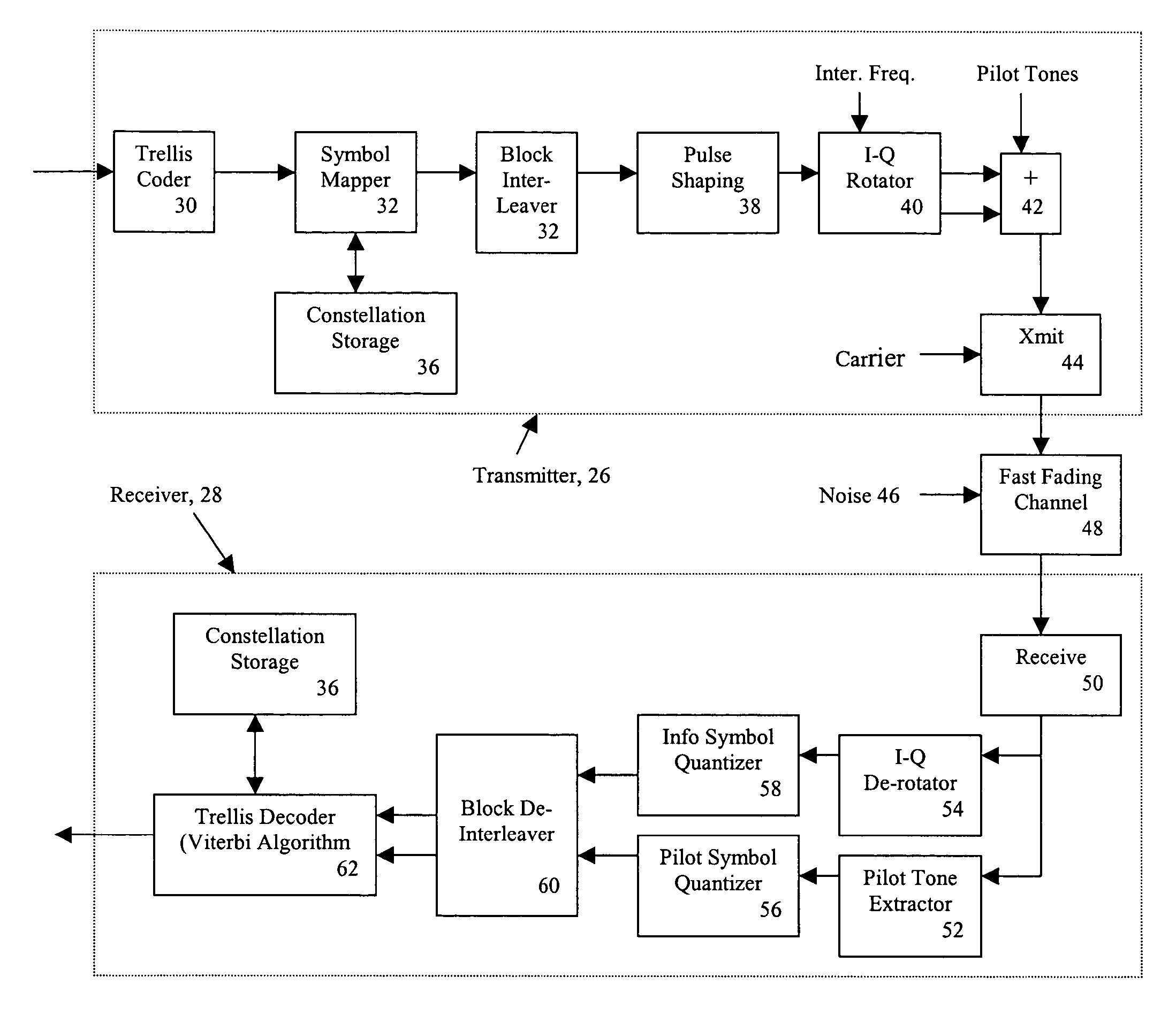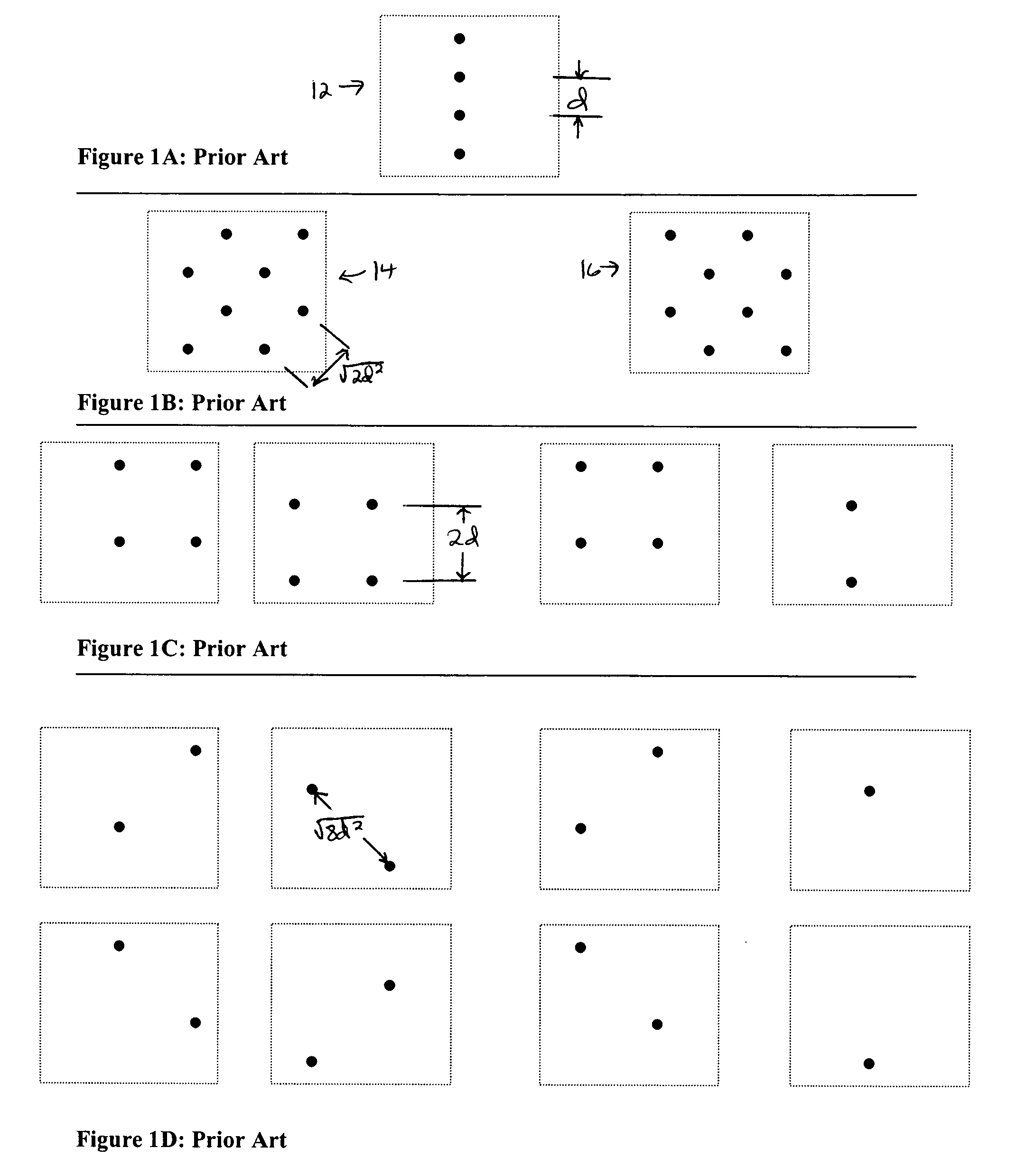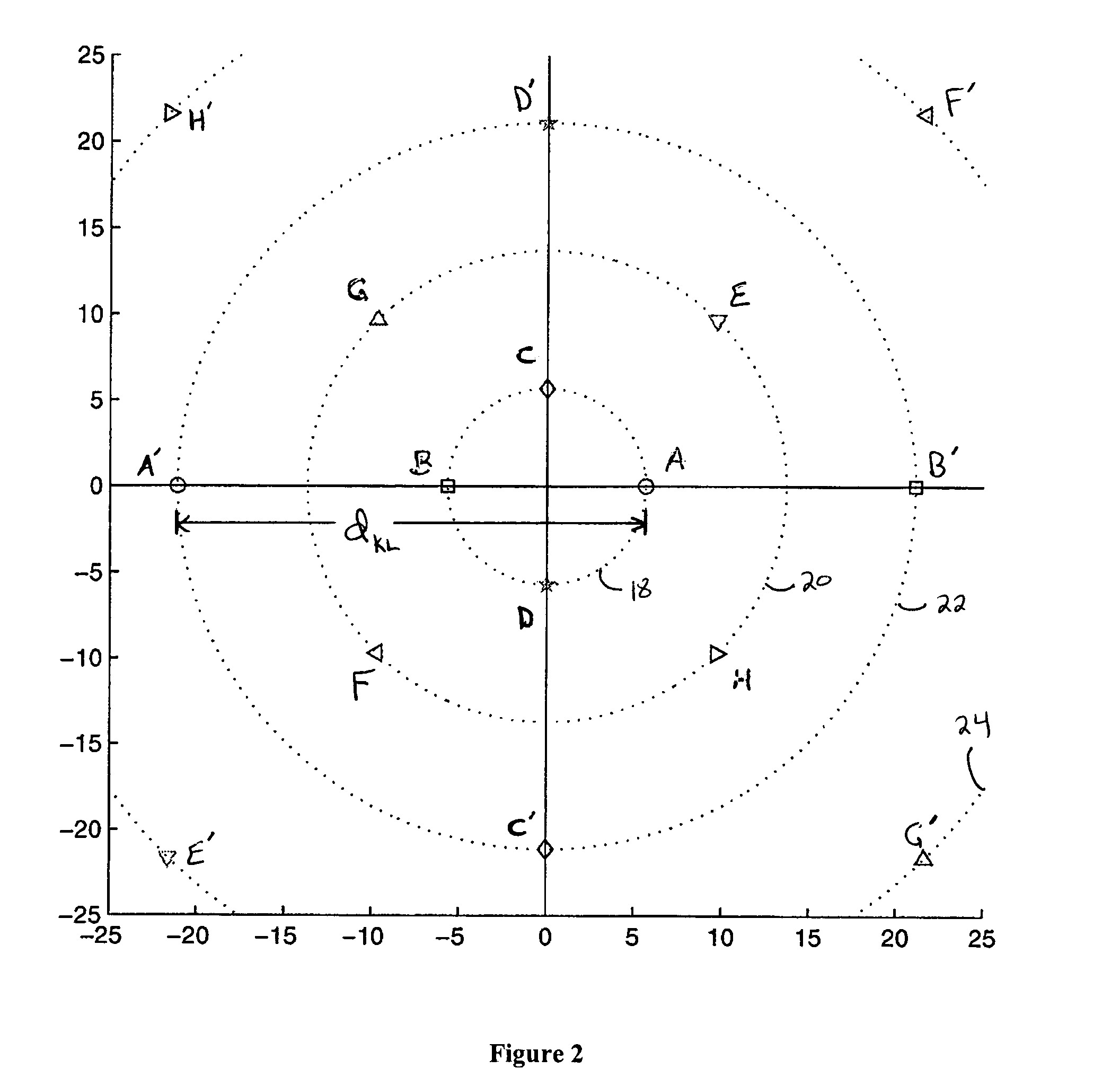Coded modulation for partially coherent systems
a partially coherent system and modulation technology, applied in the field of signal constellations, can solve the problems of increasing the error frequency at the decoder, increasing the error rate, and inducing the increase of the error ra
- Summary
- Abstract
- Description
- Claims
- Application Information
AI Technical Summary
Benefits of technology
Problems solved by technology
Method used
Image
Examples
Embodiment Construction
The present invention builds upon work detailed in International Patent Application PCT / IB03 / 02088, filed with the U.S. Receiving office on May 29, 2003 and entitled “METHOD AND APPARATUS TO ESTABLISH CONSTELLATIONS FOR IMPERFECT CHANNEL STATE INFORMATION AT A RECEIVER”. That work described signal constellations wherein the individual constellation points were separated by a distance determined from conditional distributions, such as a Kullback-Leibler (KL) distance. This invention also builds on U.S. Patent Application No. ______, filed on Jun. 25, 2003 and entitled “SIGNAL CONSTELLATIONS FOR MULTI-CARRIER SYSTEMS”, which details partially coherent signal constellations particularly adapted for multi-path communication systems. Both of the above related applications are herein incorporated by reference.
As used herein, a partially coherent system is a communication system in which the receiver does not have accurate knowledge of channel state information (CSI), and a partially co...
PUM
 Login to View More
Login to View More Abstract
Description
Claims
Application Information
 Login to View More
Login to View More - R&D
- Intellectual Property
- Life Sciences
- Materials
- Tech Scout
- Unparalleled Data Quality
- Higher Quality Content
- 60% Fewer Hallucinations
Browse by: Latest US Patents, China's latest patents, Technical Efficacy Thesaurus, Application Domain, Technology Topic, Popular Technical Reports.
© 2025 PatSnap. All rights reserved.Legal|Privacy policy|Modern Slavery Act Transparency Statement|Sitemap|About US| Contact US: help@patsnap.com



